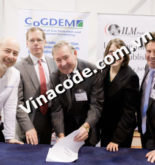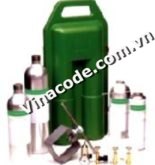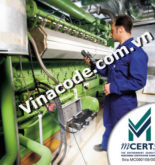The more widespread use of CO2 in refrigeration is set to gain major impetus from new gas detection technology that enables leaks to be monitored at temperatures as low as minus 40 degrees. The adoption of CO2 as one of the most practical natural refrigerant alternatives to halocarbons is key to reducing and eventually eliminating the use of environmentally damaging greenhouse gases in refrigeration. The breakthrough in gas sensor technology means that the danger to human health involved in using C02, an odourless but dangerous gas in enclosed environments, no longer poses an obstacle to its use as a refrigerant in commercial and industrial applications. Up until now, no sensor on the market was robust enough to monitor extreme temperatures for C02.
Developed and marketed worldwide by Murco Gas Detection (Ireland), the new CO2 gas sensor is based on advanced infrared detection technology with a sensor based on a novel optical design. A major advantage is that it also allows for a smaller housing. The new Murco gas detector also uses a stainless steel case rather than the ABS plastic generally seen in the industry. This robust enclosure protects the unit in difficult working environments such as machine rooms or cold stores.
This new Murco CO2 gas detector unit is approved for temperatures ranges from minus 40 to plus 50 degrees Centigrade and is available in IP66 and ATEX versions. This performance range makes it suitable for many industrial and food processing environments such as wash down areas and others with high humidity or condensation. Gas detector units are also available for internal fitting in ducts to monitor airflows and in vent pipes to monitoring pressure relief valves
“The special requirements of CO2 in cold storage and other low temperature environments were certainly one driver of this technical development, which we believe is unique,” said Dr Lorcan J. Maher, Managing Director of Murco Gas Detection. “But we are essentially aiming this new generation of infrared CO2 detectors at the general refrigeration market and especially in retailing and food processing.
“No one in the refrigeration industry doubts the importance of CO2 as the emerging natural refrigerant,” Dr Maher said. “It has important characteristics to add to its environmentally friendly nature, such as being non-flammable and not directly toxic. CO2 is relatively easy to compress and does not require recovery or recycling which gives significant economic benefits. But those qualities have led to some neglect of leak detection systems despite the occupational health dangers, government regulations and the costs of diminished refrigeration performance because of undetected leaks.”
The gas leak detector designs in general use for CO2 are satisfactory for HVAC and ambient temperature applications, Dr Maher said, but until now there has not been a robust, high performance solution for temperatures down to minus 50 degrees and below
The performance range of the new CO2 gas leak detector covers concentration levels from zero to 10,000ppm and above, with typical alarm thresholds of 5,000ppm in refrigeration monitoring and 1,000ppm or above in air conditioning. Some fruit ripening and other industrial applications commonly produce CO2 concentration levels of 2-5 per cent, making timely and accurate monitoring essential for worker safety.
This new generation of Murco gas detectors complements what is already the most comprehensive range gas leak detection equipment on the market. Sophisticated yet robust and reliable, these highly successful gas alarm systems are now used in thousands of installations worldwide to ensure compliance with international conventions and regulations. Murco offers set point systems with remote sensors and controllers and continuous measuring instruments which give the customer analogue, digital or RS485 outputs to interface with most BMS, alarm or control systems.
All Murco units incorporate constant power and system fault monitoring as standard. The Murco Sensor Transmitter range includes state-of-the-art catalytic, semiconductor, electrochemical and infrared models to detect gases in any area, room, zone, airspace or airflow.
Â



